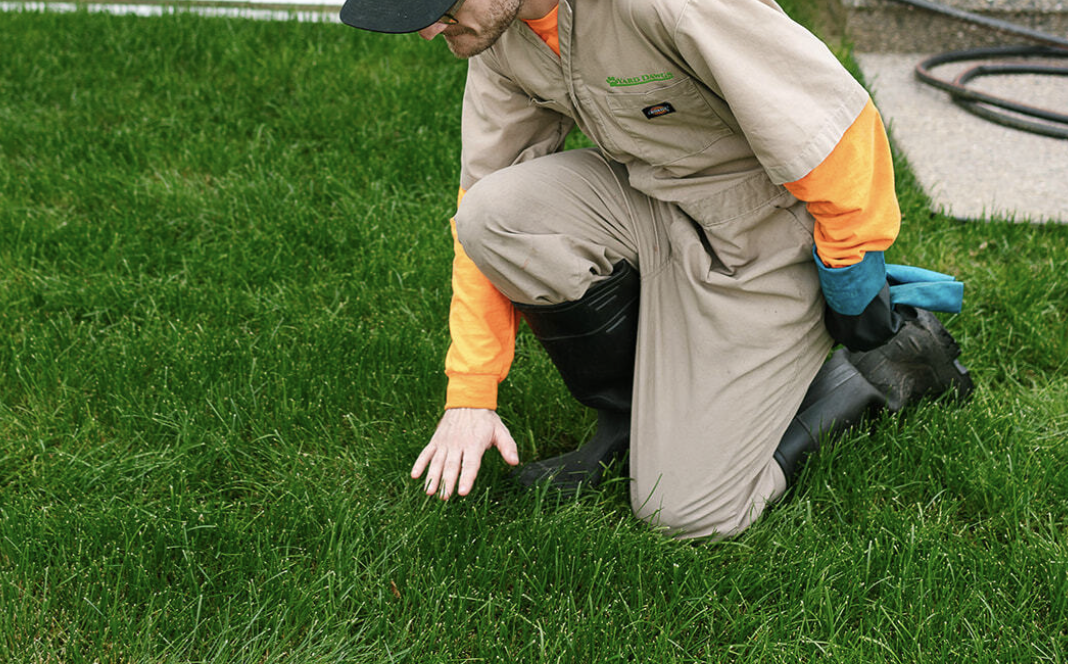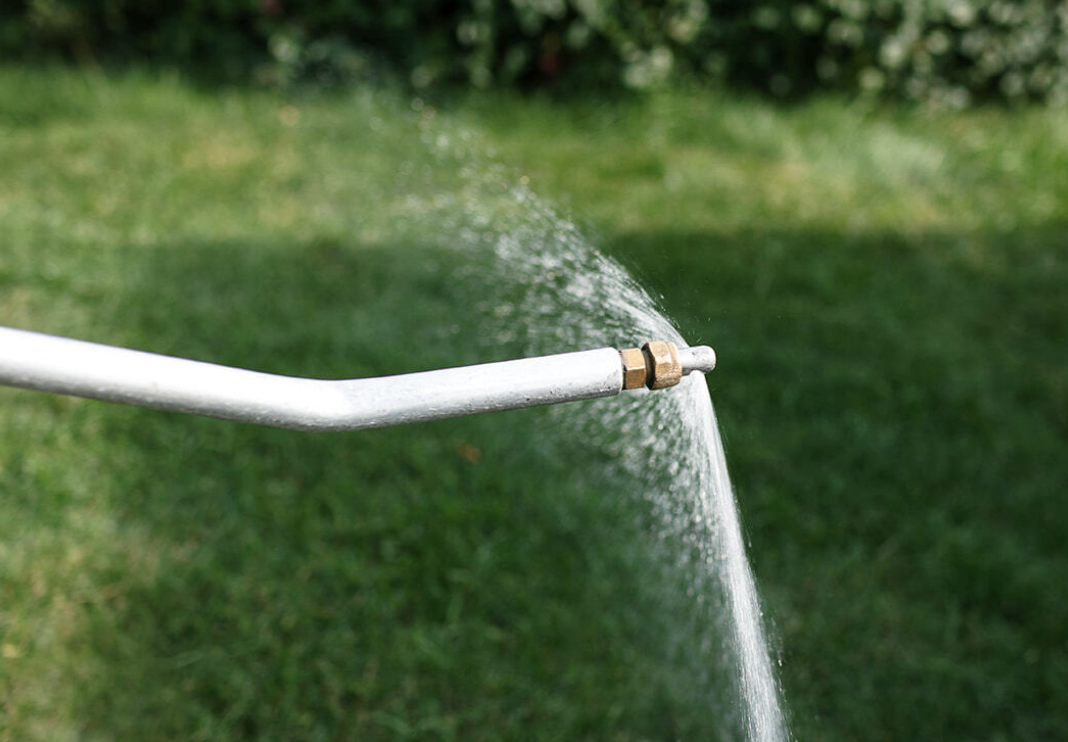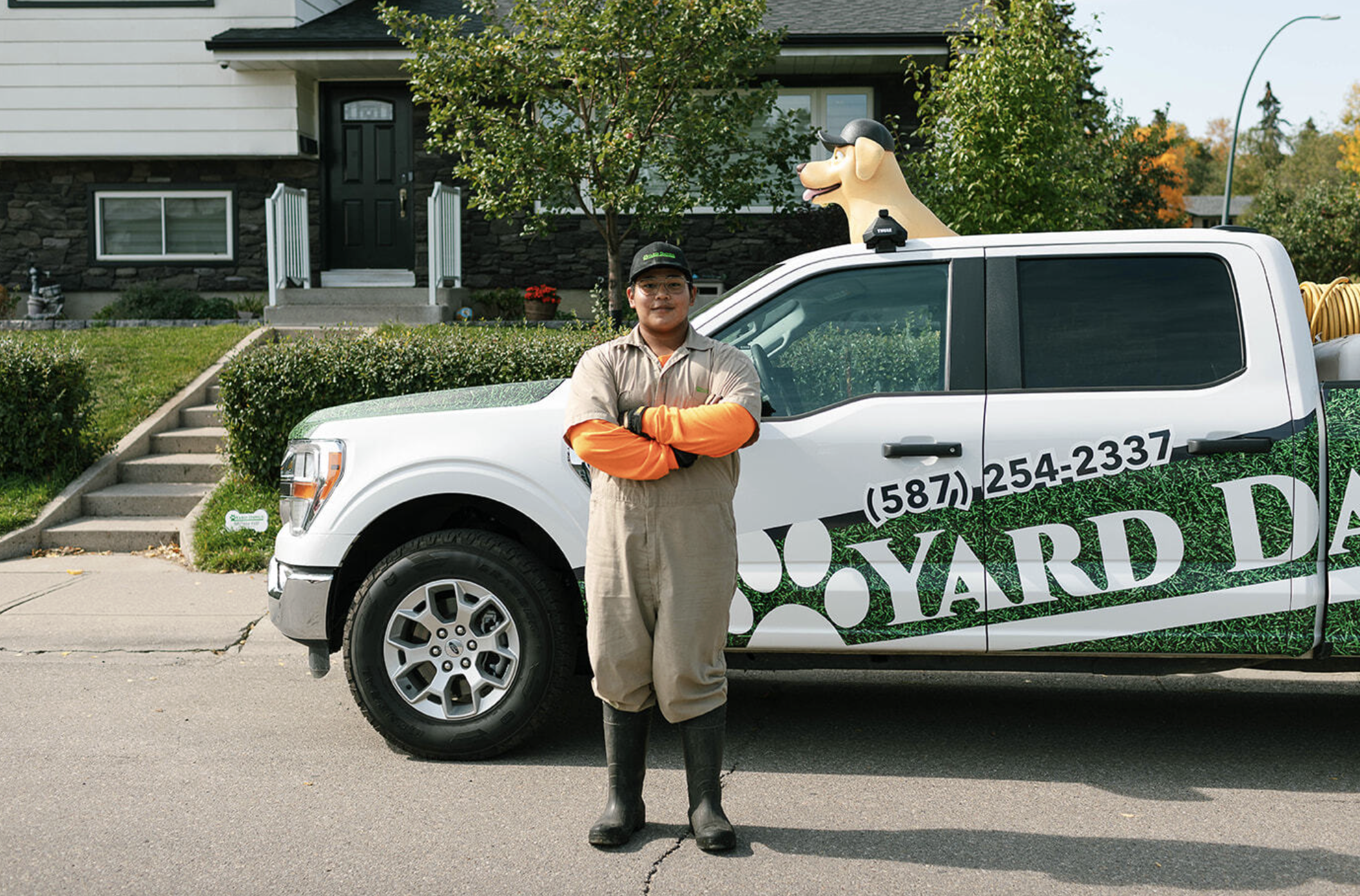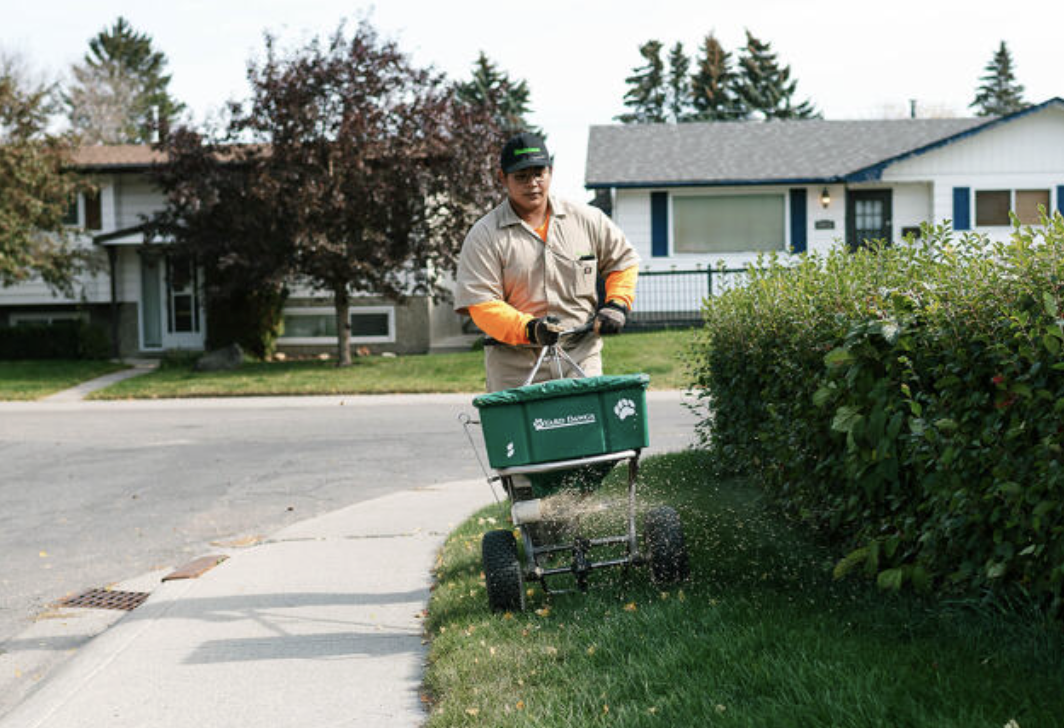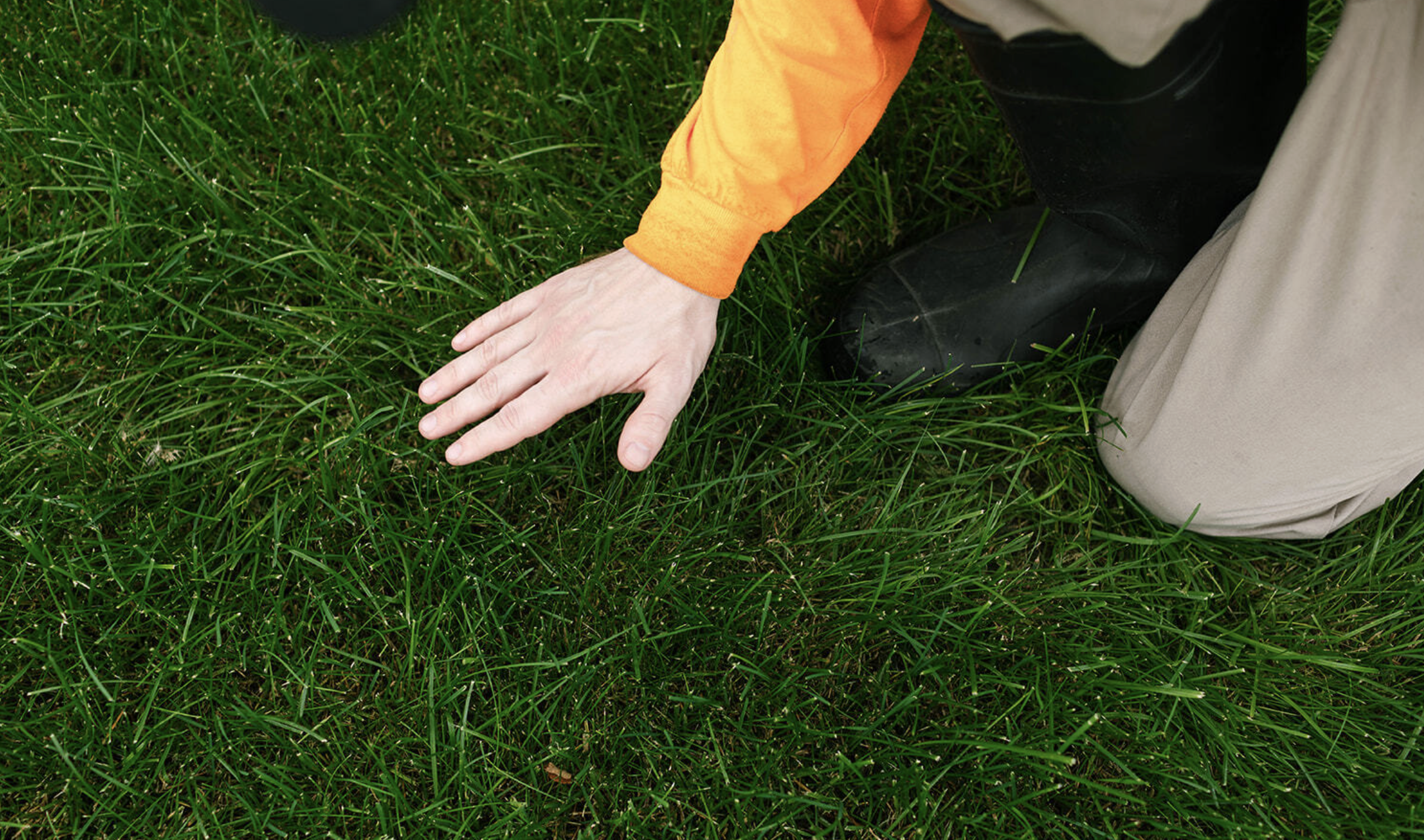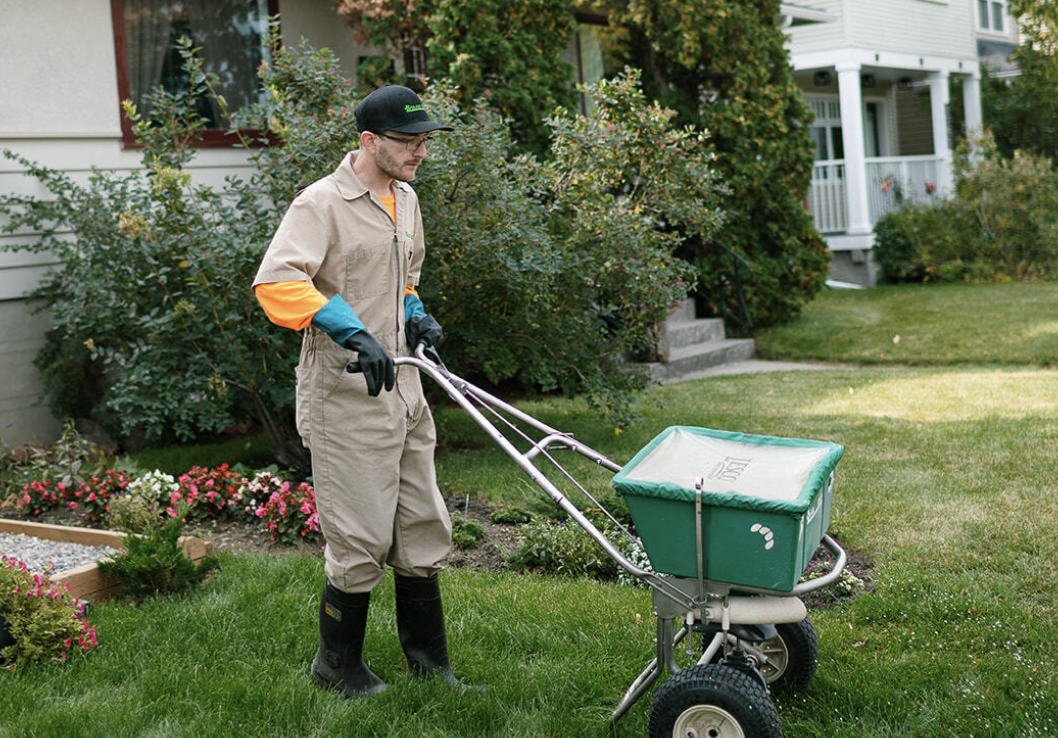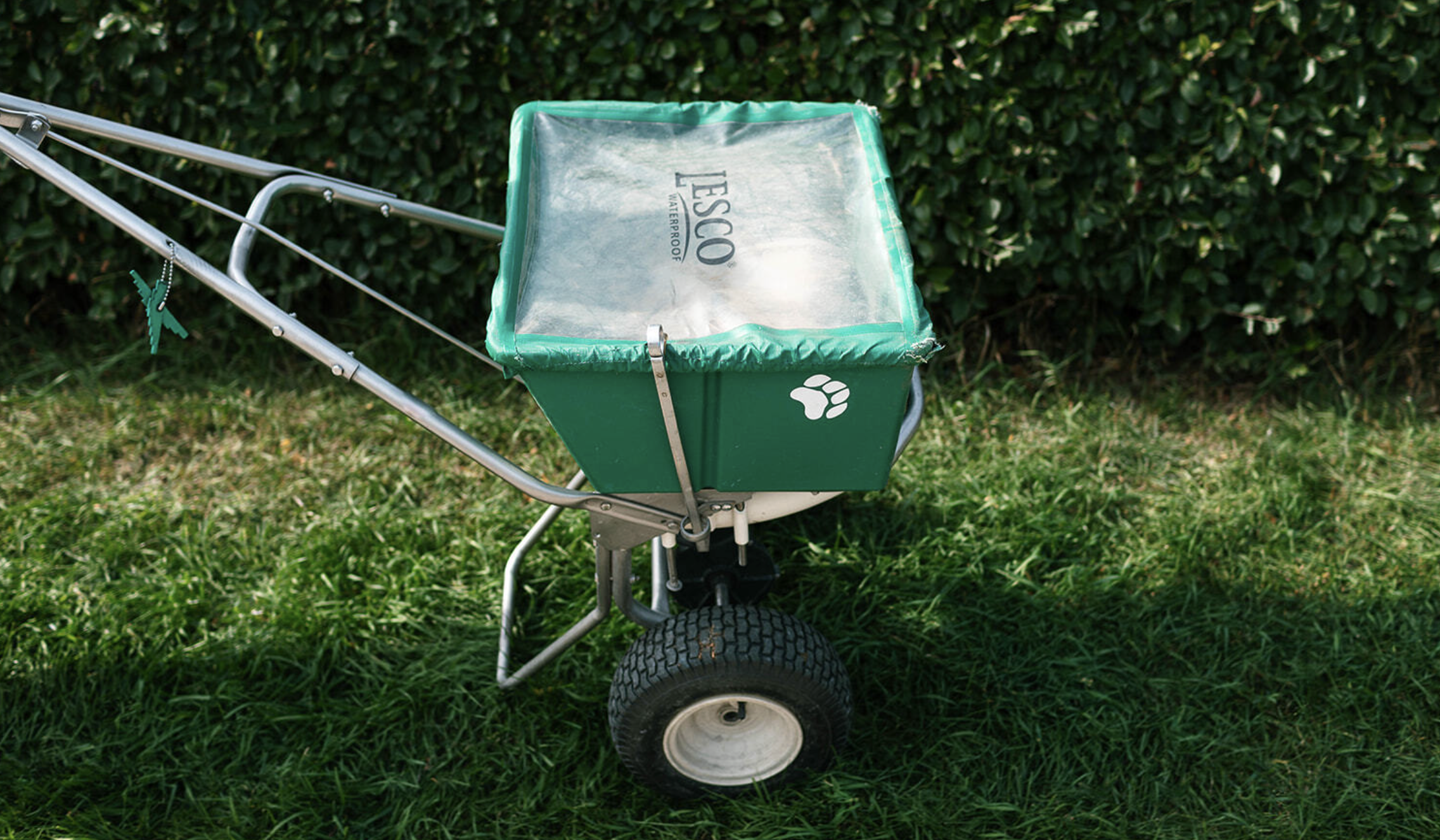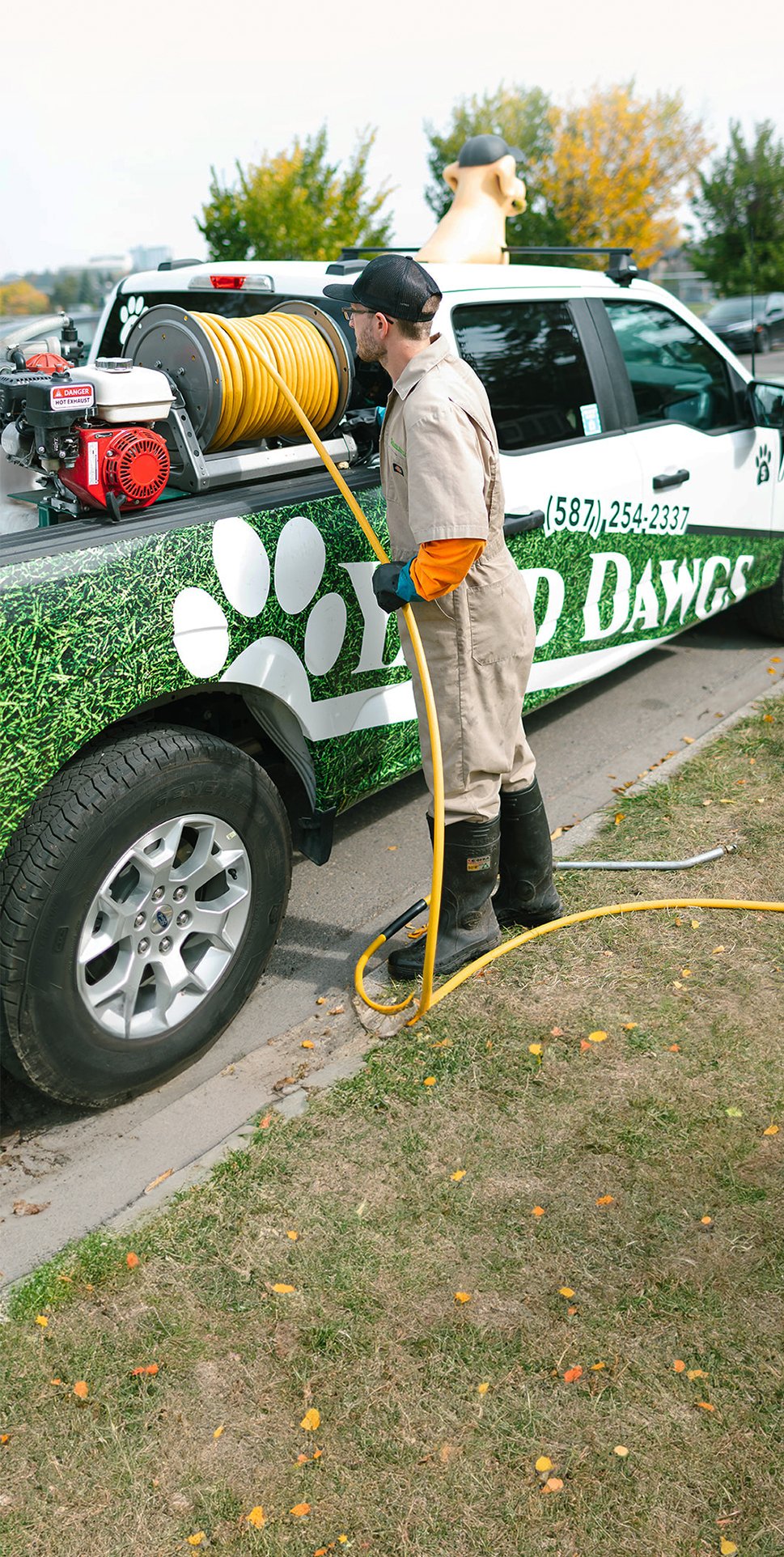Dandelions, clover, and plantain weeds can spread aggressively if not managed early in the season. At the same time, Alberta lawns need a steady supply of nutrients to recover from winter and stay green through summer. That’s why many homeowners consider weed and feed fertilizer or standalone lawn fertilization - but using the wrong product at the wrong time can waste money and damage your grass.

Here’s what homeowners in Calgary, Edmonton, Red Deer, and Saskatoon need to know about fertilizing properly, when weed and feed makes sense, and when it’s better to treat weeds and nutrients separately.
What Is Weed and Feed Lawn Fertilizer?
Weed and feed is a two-in-one product that combines a broadleaf herbicide with fertilizer. It targets common weeds while supplying nutrients like nitrogen to promote grass growth.
It’s convenient - but timing and conditions matter. Used incorrectly, weed and feed can stress your lawn, reduce weed control effectiveness, or contribute to fertilizer burn.
What Is Lawn Fertilizer Used For?
Lawn fertilizer is designed to promote healthy, thick grass by delivering essential nutrients to the roots and blades. Different fertilizers are formulated for different seasons and goals:
- Spring fertilizers promote early growth
- Summer fertilizers maintain health under stress
- Fall fertilizers strengthen roots for winter survival
Fertilizer alone does not kill weeds, but a strong, healthy lawn naturally resists weed invasion better than a weak one.
When Is the Best Time to Fertilize your Lawn in Alberta
Alberta lawns are made up of cool-season grasses, which means fertilization should follow a seasonal lawn fertilizer schedule for best results.
Lawn Fertilizer Schedule
A proper lawn fertilizer schedule in Alberta follows the natural growth cycles of cool-season grass. Fertilizer applications are timed to support active growth in spring, sustain turf through summer stress, and strengthen roots before winter. Most established lawns require three applications per year, typically spaced 6–8 weeks apart, depending on weather, soil condition, and grass health.
.png?width=675&height=305&name=Blog%20Photos%20(4).png)
Best Time to Fertilize Your Lawn in Alberta
Alberta lawns are made up of cool-season grasses, which means fertilization should follow a seasonal schedule for best results.
Spring (April–May)
- Apply a nitrogen-rich fertilizer to stimulate growth
- Common ratio: 40-0-3
- Weed and feed can be applied only after weeds are actively growing
Summer (June–August)
- Use a balanced fertilizer to maintain turf health
- Common ratio: 25-0-5
- Avoid weed and feed during heat or drought
Fall (September–November)
- Use a fertilizer with higher potassium for root strength
- Common ratio: 10-0-16
- A second weed and feed application may be used if weeds persist
- Do not apply once soil temperatures drop too low
Most lawns need three fertilizer applications per year, spaced about 6–8 weeks apart.
Best Time to Apply Weed and Feed
Weed and feed is most effective when weeds are young and actively growing, and when grass is not under stress.
Early Spring
- Apply post-emergent weed and feed once weeds are visible
- Helps green up lawns after winter
- Do not use on newly seeded lawns
Early Fall
- Optional second application if spring treatment didn’t fully eliminate weeds
- Space applications 6–8 weeks apart
- Never apply more than twice per year
When to Avoid Weed and Feed
- During heatwaves or dry conditions
- On newly seeded or recently slit-seeded lawns
- If weeds are minimal and spot control is enough
Should You Apply Fertilizer Before or After Rain?
Fertilizer works best when applied to moist soil.
- Light rain after application is ideal
- Avoid fertilizing before heavy rain to prevent runoff
- If heavy rain is forecast, lightly water first to dissolve granules
- If it just rained, wait 1–2 days until soil is moist, not saturated
How Much Fertilizer Should You Use?
Always follow the fertilizer label, which typically recommends applying ½ to 1 pound of nitrogen per 1,000 sq. ft.
General guidelines:
- A 50 lb bag covers approximately 5,000–10,000 sq. ft.
- A soil test provides the most accurate recommendation
- Overapplication can cause fertilizer burn and long-term damage
.png?width=675&height=305&name=Blog%20Photos%20(3).png)
How to Apply Lawn Fertilizer or Weed and Feed Correctly
- Mow the lawn 2–3 days before application
- Apply to slightly damp grass so granules adhere
- Use a spreader, never apply by hand
- Follow spreader settings exactly as listed on the bag
- Do not water for 24–48 hours after weed and feed
- Keep kids and pets off the lawn until granules dissolve
Pros and Cons of Fertilizer and Weed & Feed
Pros
- Promotes thicker, greener grass
- Strengthens lawn’s resistance to weeds
- Saves time when applied correctly
Cons
- Incorrect timing reduces effectiveness
- Overuse can burn grass and harm soil
- Weed and feed lacks precision for targeted issues
- DIY overfertilization is common
Is Weed and Feed Right for Your Lawn?
Weed and feed works best for lawns with:
- Moderate weed pressure
- Established grass
- Proper moisture and temperature conditions
You may be better off with separate treatments if:
- You have only scattered weeds
- Your lawn is weed-free but nutrient deficient
- Your lawn was recently seeded
- Specific problem weeds need targeted control
Lawn Fertilizing Tips and Tricks
A lawn fertilizer schedule is most effective when application is precise and adjusted to real lawn conditions, not just calendar dates. To avoid waste, turf damage, and uneven results, focus on the following practical fertilizing practices:
- Apply fertilizer only to actively growing grass. Fertilizing frozen, dormant, or drought-stressed turf prevents nutrient uptake and increases the risk of runoff.
- Match fertilizer type and nutrient ratio to the season, using higher nitrogen in spring, balanced formulas in summer, and potassium-heavy blends in fall.
- Calibrate your spreader before each application and avoid overlapping passes, which commonly cause striping and fertilizer burn.
- Check weather conditions before application and avoid fertilizing ahead of heavy rain, as nutrients can wash away before reaching the root zone.
- Water lightly after fertilizing (unless using weed and feed) to help nutrients move into the soil without oversaturating it.
- Respect local watering restrictions and seasonal bans to stay compliant and prevent unnecessary stress on the lawn.
Consistent timing, even distribution, and weather-aware application are what turn a basic fertilizer plan into a reliable lawn fertilizer schedule that delivers measurable results.
Smarter Alternatives to Weed and Feed
At Yard Dawgs, lawn care is tailored - not one-size-fits-all. Depending on your lawn’s condition, better options may include:
- Targeted weed control with a weed-free guarantee
- Seasonal fertilizer programs using premium blends
- Super Juice and sea kelp for root growth and stress resistance
- Liquid or mechanical aeration to improve soil absorption
- Hardscape weed control for cracks, pavers, and driveways
- Chinch bug control to prevent turf damage that mimics drought stress
Alberta Lawn Fertilization Summary
- Fertilize spring, summer, and fall
- Use weed and feed only when weeds are active
- Never apply during extreme heat or drought
- Focus on fertilizer quality, not frequency
- Separate weed control and fertilization often delivers better results
Let the Experts Handle It
Knowing exactly what product, when to apply, and how much to use is where many DIY lawns go wrong. A professional lawn care company uses higher-grade fertilizer, precise application methods, and seasonally adjusted treatment plans - reducing the risk of burn while maximizing results.
Yard Dawgs creates customized lawn care schedules, assigns the same crew to your property all season, and adjusts treatments as your lawn changes. Whether you need weed control, fertilization, aeration, or a complete lawn recovery plan, we’ll help your lawn thrive the right way.






.png)

